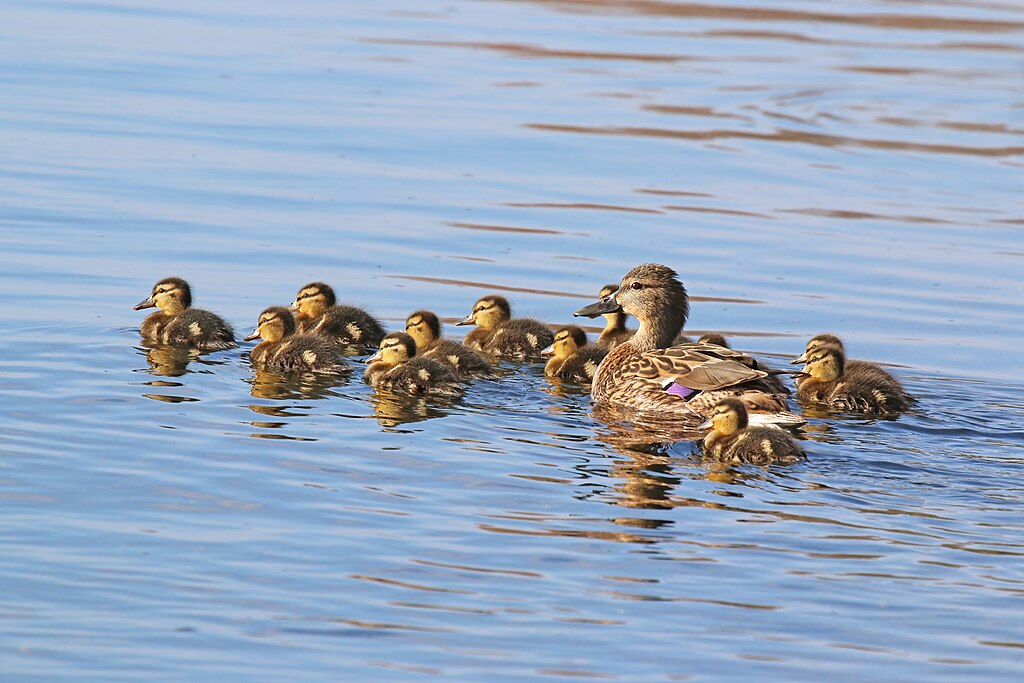
14 May 2024
When I visit Duck Hollow I expect to see a lot of mallards (Anas platyrhynchos) but that hasn’t been the case lately. Over the winter their numbers were high — anywhere from 10 to 30 — but since late March the count has dropped to 4-7 and all but one is male. Where are the female mallards?
Mallards pair up in autumn in Pennsylvania but don’t begin nesting until mid-April or early May. The burden of nesting rests on the female. She chooses the site, makes the nest, lays the eggs, does all the incubation and is the only parent that cares for the chicks.
As she searches for a nest site she engages in Persistent Quacking. (Did you know that only females make the Quack sound?) Scientists believe she’s very vocal in order to attract nearby predators. If a predator shows up at a potential site, she knows that place is unsafe and moves on.
Birds of the World notes that “Urban Mallards use a variety of additional cover types, including evergreens, ornamental shrubs, vines, gardens, woodpiles, and artificial structures such as docks, boats and buildings.”

Having chosen a densely covered site on the ground near water, she scrapes a depression and pulls in nearby material for the nest. Then she lays one egg per day, as many as 13. She adds her own down or breast feathers to cover the eggs when she takes a break. You can see feathers surrounding her on the nest below.

After 28 days the eggs hatch.
The first egg laid is first to hatch and others usually follow within 6–10 hours. Most of the eggs hatch during the day (as per Birds of the World). The next morning their mother leads the chicks to water. It’s the safest place to be until they can fly.

This month the males at Duck Hollow are hanging around near the females but won’t take an active role. They look like bachelor groups but they aren’t bachelors.
Have you seen any female mallards lately?
(photos embedded from Wikimedia Commons; click on the captions to see the original)
There are many black crowned night herons where I live. They are there all year round, in winter they are still rather numerous. I used to be puzzled by the sudden drop in their number in early spring. I then discovered a colony of night heron nests in our city, then made the connection that when there are very few herons nearby in early spring, I think they are nesting!
So the dozen or so eggs all hatch about the same time? That could be two weeks between the first and last, if not. Does she keep going back to the nest to lead new ducklings to the water?
Stephen, sorry I wasn’t clear in the text. Birds of the World explains that all of them hatch within 6-10 hours — basically at the same time.